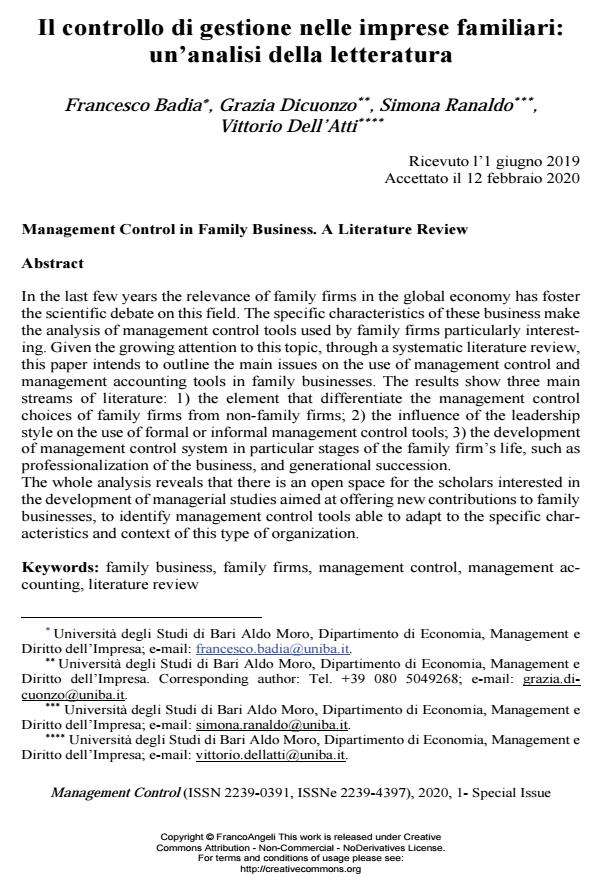Il controllo di gestione nelle imprese familiari: un’analisi della letteratura
Titolo Rivista MANAGEMENT CONTROL
Autori/Curatori Francesco Badia, Grazia Dicuonzo, Simona Ranaldo, Vittorio Dell’Atti
Anno di pubblicazione 2020 Fascicolo 2020/Suppl. 1
Lingua Italiano Numero pagine 24 P. 79-102 Dimensione file 262 KB
DOI 10.3280/MACO2020-001-S1006
Il DOI è il codice a barre della proprietà intellettuale: per saperne di più
clicca qui

FrancoAngeli è membro della Publishers International Linking Association, Inc (PILA)associazione indipendente e non profit per facilitare (attraverso i servizi tecnologici implementati da CrossRef.org) l’accesso degli studiosi ai contenuti digitali nelle pubblicazioni professionali e scientifiche
In the last few years the relevance of family firms in the global economy has fos-ter the scientific debate on this field. The specific characteristics of these business make the analysis of management control tools used by family firms particularly interesting. Given the growing attention to this topic, through a systematic literature review, this paper intends to outline the main issues on the use of management control and management accounting tools in family businesses. The results show three main streams of literature: 1) the element that differentiate the management control choices of family firms from non-family firms; 2) the influence of the leadership style on the use of formal or informal management control tools; 3) the development of management control system in particular stages of the family firm’s life, such as professionalization of the business, and generational succes-sion. The whole analysis reveals that there is an open space for the scholars interested in the development of managerial studies aimed at offering new contributions to family businesses, to identify management control tools able to adapt to the spe-cific characteristics and context of this type of organization.
Parole chiave:Family business, family firms, management control, management ac-counting, literature review
Francesco Badia, Grazia Dicuonzo, Simona Ranaldo, Vittorio Dell’Atti, Il controllo di gestione nelle imprese familiari: un’analisi della letteratura in "MANAGEMENT CONTROL" Suppl. 1/2020, pp 79-102, DOI: 10.3280/MACO2020-001-S1006